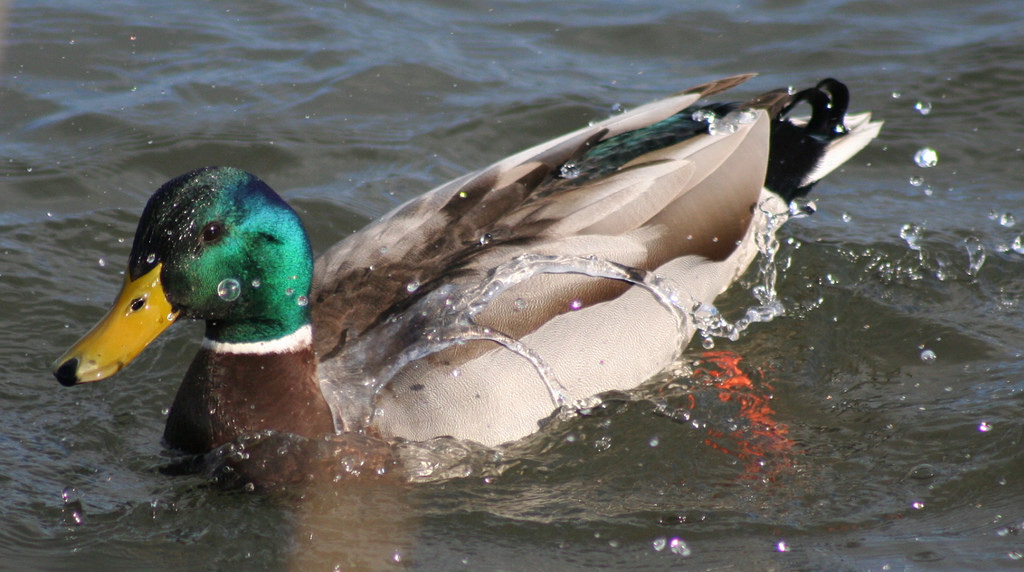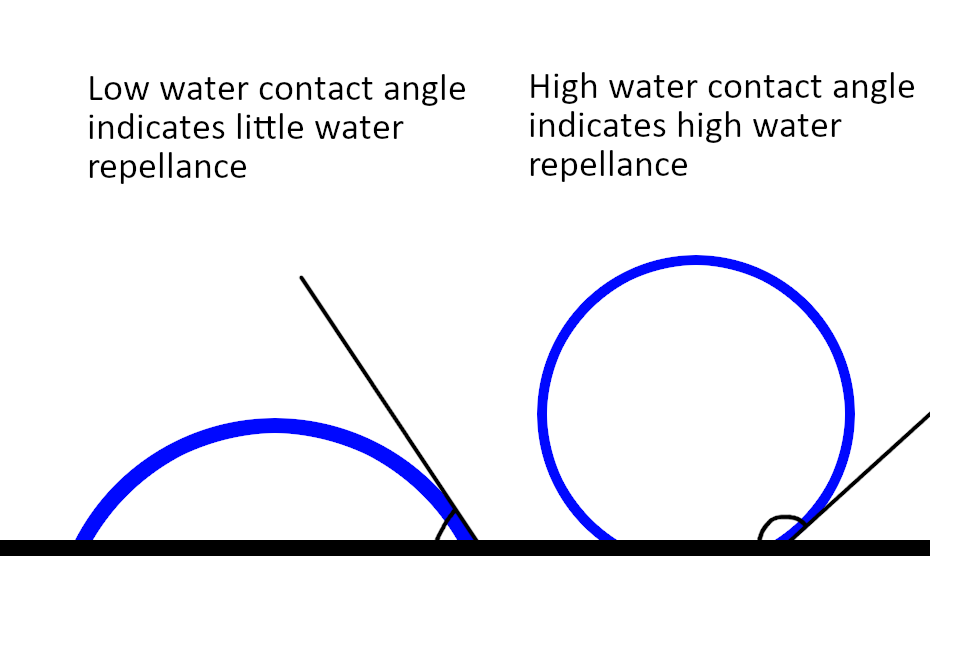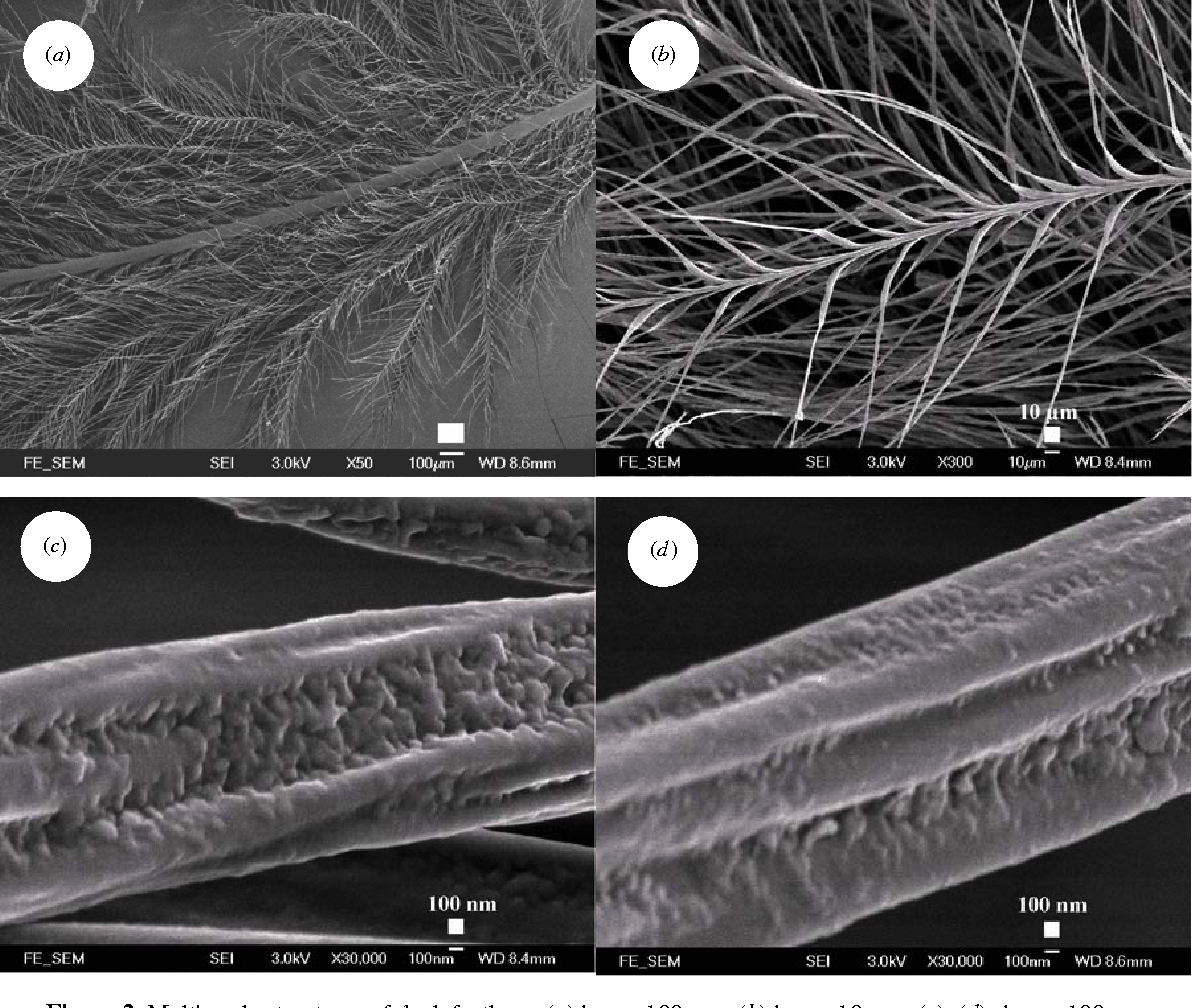Water off
a Duck's Back
Duck
feathers, and especially those on the back, have
the remarkable property that water does not stick
to them. It simply rolls off like a marble.

Via:
John Haslam (Flickr)
Feathers are mostly made of keratin, and while
keratin is a hydrophobic material, this alone does
not explain the remarkable repelling abilities of
a duck. Consider that mammals' hair is made of the
same material, but very easily becomes soaked in
water. It was once believed that the repellance
comes from preening oil which coats the surface of
the feathers, but this again is insufficient to
model the repellance of duck feathers.
Water repellance of a material can be measured by
the water contact angle- the angle between
the surface of a drop of water and the surface
that it is on. The more hydrophobic a material is,
higher this number is. Materials such as wood are
extremely hydrophillic, and have an angle close to
zero. A material with no attraction at all to
water would have an angle of 180.

Oils typically have
an angle of around 120, while duck feathers are
typically near 150. Oil cannot alone be the reason
for the hydrophobic nature of duck feathers. The
reason that duck feathers exhibit such high
repellance is in the nanostructure of the
material. The surfaces of duck feathers are very
uneven, which creates air pockets on the surface.

SEM photograph of a duck's feather at various
scales. Via Yuyang Liu
Water exhibits almost no attraction to air,
which causes very low friction between the surface
and the water. This allows water to slip over the
surface of the feathers with ease.
Another source of repellance in duck feathers
comes from the cohesive nature of water. The water
molecules are held together by cohesive forces
between the water molecules due to hydrogen
bonding. The attractive force between the keratin
material of the feather and the water molecules
cannot overcome that of the cohesiveness of the
water droplet, because the water must conform to
the surface of the feather. Because the surfaces
have complicated nanostructures, the water cannot
be forced into the tiny gaps in the feathers by
only adhesion and gravity. The water droplet stays
together as a result, and the duck's feathers stay
dry.


|